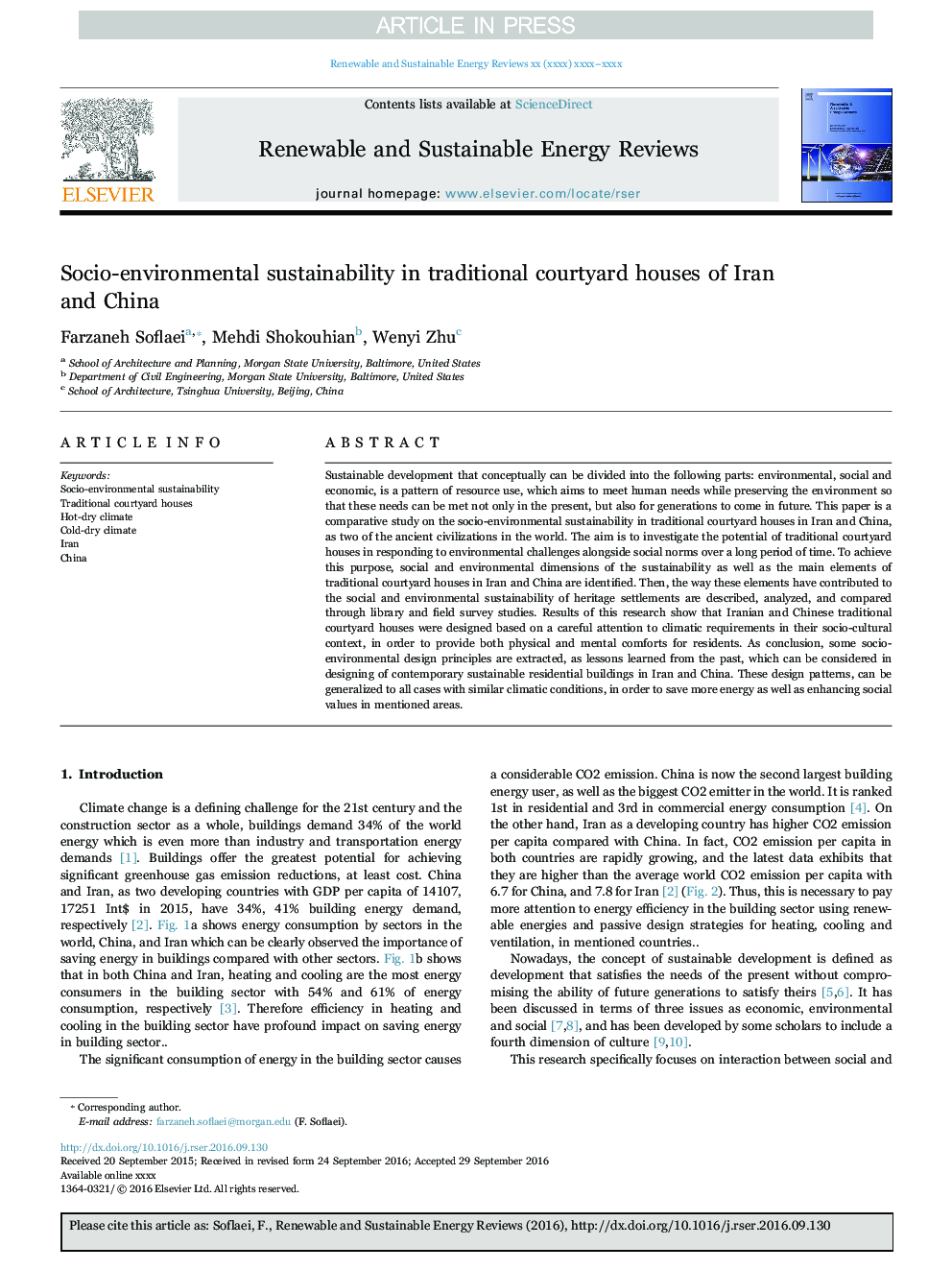| Article ID | Journal | Published Year | Pages | File Type |
|---|---|---|---|---|
| 5483397 | Renewable and Sustainable Energy Reviews | 2017 | 23 Pages |
Abstract
Sustainable development that conceptually can be divided into the following parts: environmental, social and economic, is a pattern of resource use, which aims to meet human needs while preserving the environment so that these needs can be met not only in the present, but also for generations to come in future. This paper is a comparative study on the socio-environmental sustainability in traditional courtyard houses in Iran and China, as two of the ancient civilizations in the world. The aim is to investigate the potential of traditional courtyard houses in responding to environmental challenges alongside social norms over a long period of time. To achieve this purpose, social and environmental dimensions of the sustainability as well as the main elements of traditional courtyard houses in Iran and China are identified. Then, the way these elements have contributed to the social and environmental sustainability of heritage settlements are described, analyzed, and compared through library and field survey studies. Results of this research show that Iranian and Chinese traditional courtyard houses were designed based on a careful attention to climatic requirements in their socio-cultural context, in order to provide both physical and mental comforts for residents. As conclusion, some socio-environmental design principles are extracted, as lessons learned from the past, which can be considered in designing of contemporary sustainable residential buildings in Iran and China. These design patterns, can be generalized to all cases with similar climatic conditions, in order to save more energy as well as enhancing social values in mentioned areas.
Keywords
Related Topics
Physical Sciences and Engineering
Energy
Renewable Energy, Sustainability and the Environment
Authors
Farzaneh Soflaei, Mehdi Shokouhian, Wenyi Zhu,
